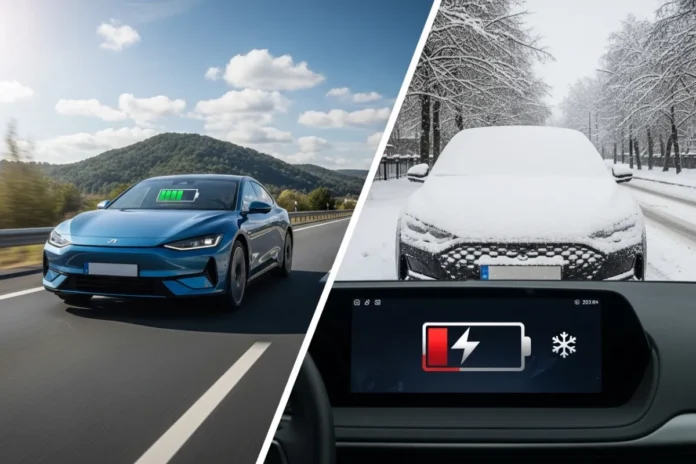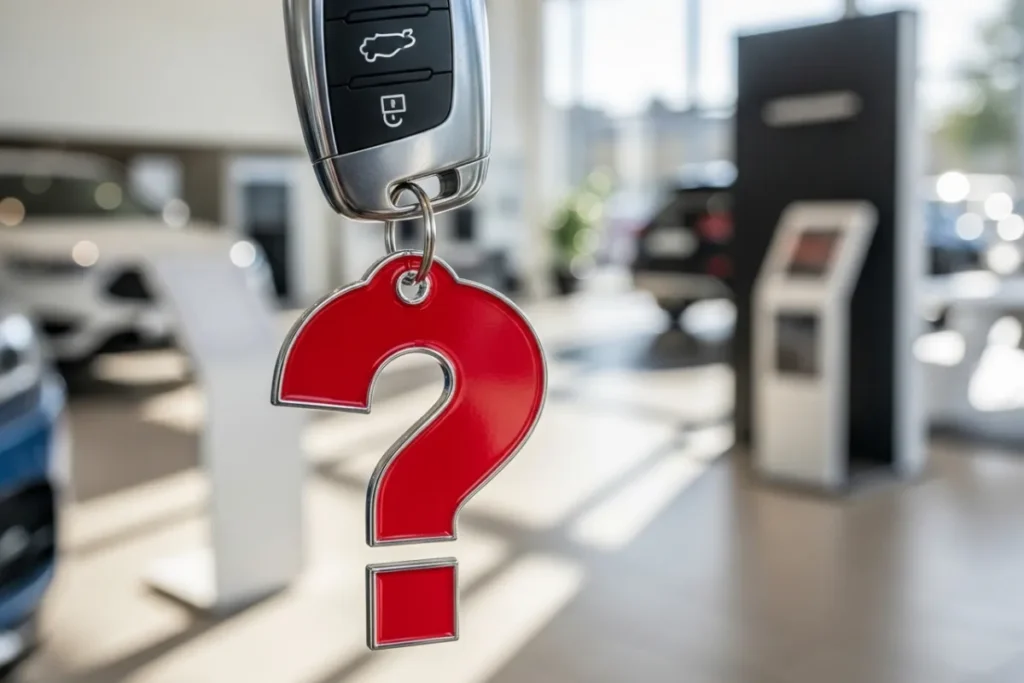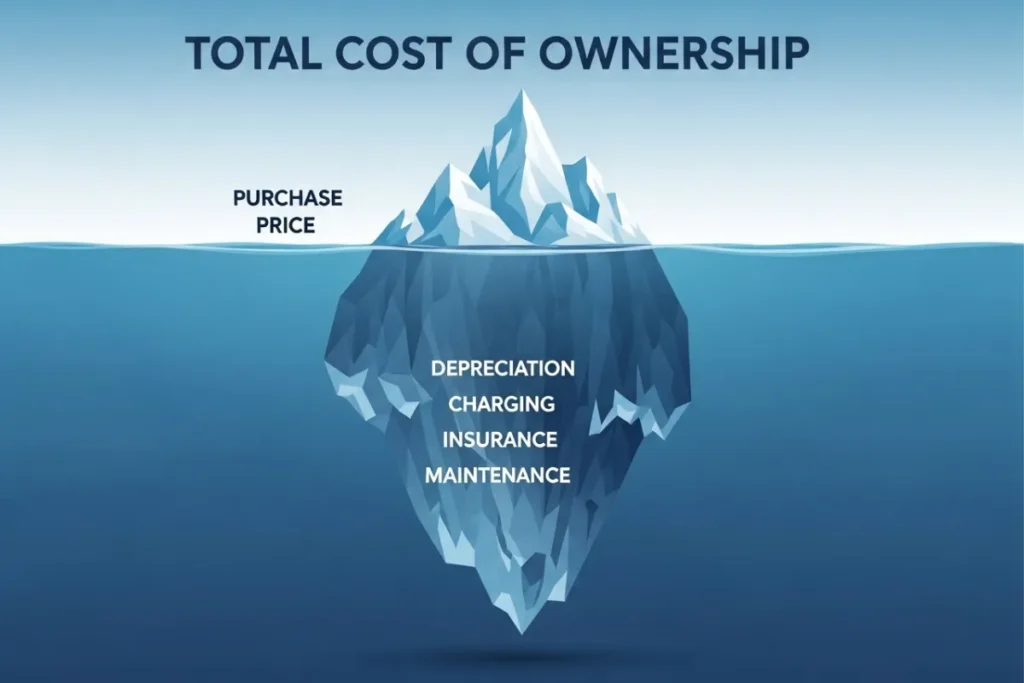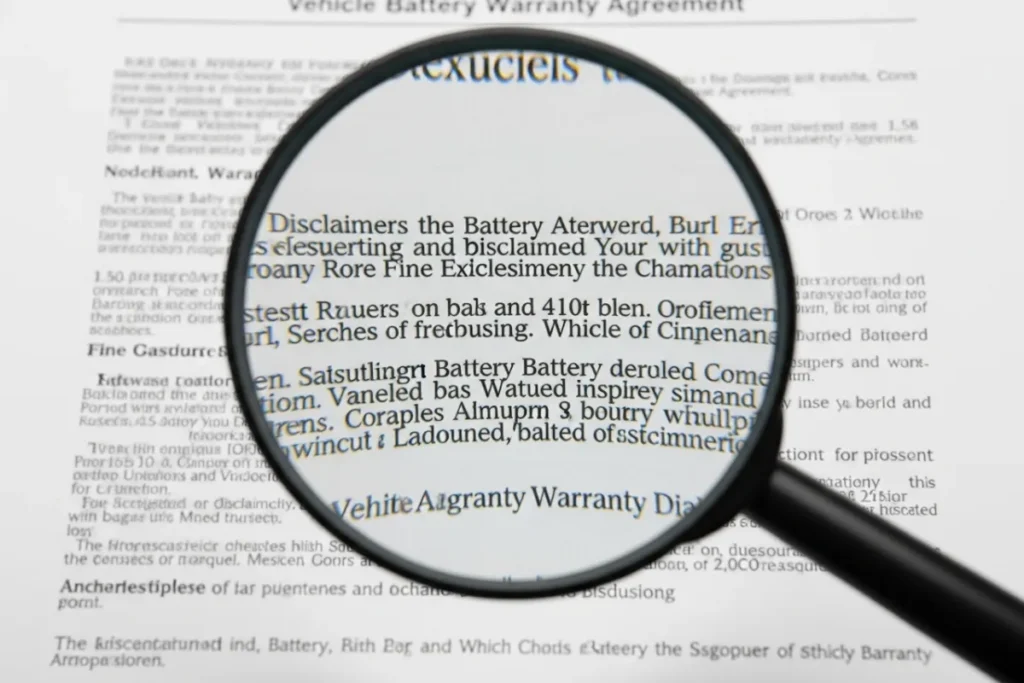
You’ve memorized the EPA range figures, compared charging speeds down to the kilowatt, and watched countless drag race videos. But the analysis paralysis is real, and I’m here to tell you that you’re focusing on the wrong things. The #1 mistake 90% of first-time buyers make is choosing the best electric car to buy based on a spec sheet instead of a lifestyle audit. This guide isn’t about crowning a single winner; it’s a strategic framework built on my experience to help you bypass the marketing noise, avoid costly regret, and find the best electric car to buy for the only person that matters: you.
Introduction
If you’re on the hunt for the best electric car to buy, chances are you’re doing it all wrong. I know because I’ve seen it countless times, and frankly, I’ve made the same mistakes myself. You’ve probably got a spreadsheet open right now, comparing EPA range figures down to the last mile, obsessing over kilowatt-hour charging speeds, and memorizing 0-60 times from YouTube drag races. The auto industry has conditioned us to believe that the best electric car to buy is the one that wins on paper. This is the #1 mistake, the devastatingly common trap that leads directly to buyer’s remorse.
This is not a typical buying guide. It’s a cautionary tale, a strategic framework built from my personal experience driving, charging, and living with over twenty different EVs. We’re going to bypass the spec-sheet shouting match and focus on the factors that define your long-term satisfaction. This article is built on a single, powerful thesis: the best electric car to buy isn’t the one with the highest numbers, but the one that seamlessly integrates into your specific life with the least amount of friction.
Together, we will dismantle the ultimate EV red herring—the myth of maximum range—and show you why paying for miles you’ll never use is a financial mistake. We will analyze why your local climate is the invisible performance killer that has more say over your battery than you do. We’ll expose the crucial difference between a charging network’s advertised speed and its real-world reliability, and explore why a best electric car to buy software is now more important than its horsepower. By the end, you won’t just have a list of models; you’ll have a new way of thinking—a lifestyle-first framework designed to help you find the car you’ll love to own.
The Core Misconception: Why “Maximum Range” is the Ultimate EV Red Herring
Let’s get this out of the way immediately: the relentless obsession with achieving the highest possible EPA-estimated range is the single most expensive and misguided priority for a first-time EV buyer. It’s a marketing-fueled red herring. Automakers love to tout 350, 400, or even 500 miles of range because it’s an easy number to put on a billboard, preying on the “range anxiety” that most new buyers feel. But from my analysis of both my driving habits and national data, this anxiety is wildly disconnected from reality.
The average American drives less than 40 miles a day. Think about your own life—your commute, errands, and school runs. For over 95% of your year, you are likely using a fraction of your best electric car’s potential range, especially if you can charge at home overnight. Paying a $10,000 premium for a “Long Range” model that gives you an extra 80 miles of range is like buying a massive expedition-grade backpack for a daily walk to the corner store. You’re paying for a “what if” scenario that rarely, if ever, happens.
This isn’t just about the initial sticker shock. That larger battery has hidden costs. It’s heavy, and weight is the enemy of efficiency. A heavier best electric car to buy requires more energy (kilowatt-hours) to travel the same distance, meaning your “fuel” costs are slightly higher, forever. Furthermore, a physically larger battery will inevitably be more expensive to replace far down the road. The smarter approach is to “right-size” your purchase. A simple formula I use is this: take your longest typical daily drive and double it. That’s your comfortable buffer. Add another 20% for long-term battery degradation, and you have your real-world range target. Anything more is a luxury, not a necessity.

The Invisible Performance Killer: How Your Climate Dictates Your EV’s True Potential
If “maximum range” is the most overrated spec, then your geographical location is the most tragically underrated one. The range figure advertised on a manufacturer’s website is achieved in perfect, laboratory-like conditions—usually around 70°F (21°C). The moment you drive that car into the brutal reality of a northern winter, that number becomes a fantasy. From my analysis and real-world testing, this isn’t a minor dip; it’s a cliff. A car rated for 300 miles in sunny California can effectively become a 180-mile best electric car to buy during a Chicago cold snap.
Why? It’s a battle against physics on two fronts. First, a cold battery is a sluggish battery; the electrochemical reactions that release energy simply happen less efficiently. Second, your best electric car to buy must heat not only itself but also the cabin for you, the driver. In a gas car, this heat is a byproduct of an inefficient engine. In an EV, creating that warmth requires a significant amount of energy drawn directly from the battery that would otherwise be used for driving.
This is where we find the single most important piece of optional hardware for anyone living outside the Sunbelt: the heat pump. In simple terms, a standard resistive heater is like a toaster—it creates heat by burning through energy. A heat pump, conversely, is like a reverse air conditioner; it cleverly scavenges and moves ambient heat from outside the car to the inside, using a fraction of the energy. In my opinion, for anyone who sees regular freezing temperatures, a heat pump is not optional; it is the non-negotiable feature that mitigates the worst of winter range loss. And while extreme heat doesn’t slash immediate range as severely, it acts as a silent killer for long-term battery health. A vehicle with a robust liquid-cooling system will protect your battery investment for years, while one without will see its capacity degrade much faster in places like Arizona or Texas. Ignoring your climate is a devastatingly common mistake that leads directly to buyer’s remorse.
The Charging Network Fallacy: It’s Not Just About Speed, It’s About the Experience
On paper, the charging war looks like it’s evening out. Many new EVs from Hyundai, Kia, and Porsche can technically charge faster than some Teslas. But this is another spec-sheet trap. The maximum charging speed of your best electric car to buy is utterly irrelevant if the charger you pull up to is broken, occupied, or refuses to accept your payment. The real metric for a charging network isn’t theoretical peak speed; it’s the reliability of the experience. This is where, in my analysis, Tesla’s Supercharger network still maintains a massive competitive moat. The experience is seamless: you park, you plug in, and it works. The payment is automatic. The availability and operational status shown in the car’s navigation are almost always accurate. It removes the friction and anxiety from road-tripping.
Contrast this with what I call the “Wild West of CCS,” the network standard used by nearly every other automaker. Brands like Electrify America and EVgo have made huge strides, but the real-world experience can still be a frustrating gamble. Based on my travels and countless user reports, it’s not uncommon to pull into a station and find half the chargers out of service. You might have to cycle through three different apps on your phone or multiple credit card swipes just to initiate a session. The speed you get can be a fraction of what was promised. This inconsistency is the core problem; it turns a simple refueling stop into a potential point of failure on your journey.
This is why you must conduct a personal charging audit before you buy. Forget the nationwide maps promoted by manufacturers. Download an app like PlugShare and look at the real user check-ins for the specific charging stations along your most frequent long-distance routes. Is the charger at that crucial halfway point to your parents’ house constantly reported as broken? That’s a massive red flag for that brand of best electric car to buy, regardless of its specs. The best network is the one that is robust and reliable, where you need it to be.

“Software on Wheels”: Why the User Interface Matters More Than Horsepower
The thrill of instantaneous acceleration is a fantastic party trick, but its novelty fades. What doesn’t fade is your daily interaction with the car’s central nervous system: its software. In my experience, a buggy, slow, and poorly designed user interface will cause you a thousand daily frustrations, completely eclipsing the rare joy of a sub-five-second 0-60 time. I’ve driven cars where simply adjusting the climate control requires navigating three sub-menus, or where the phone-as-a-key feature works only 80% of the time. These aren’t minor inconveniences; they are daily papercuts that erode the pleasure of ownership. You interact with the touchscreen and the companion app every single day; it has to be reliable.
This is where the concept of Over-the-Air (OTA) updates becomes profoundly important. Forward-looking brands like Tesla, Rivian, and Polestar treat their vehicles like smartphones. They regularly push out software updates that can fix bugs, introduce new features (like a dog mode or a new streaming service), and even improve performance and efficiency—all while the best electric car to buy is parked in your garage. You are buying a product that actively gets better over time. Conversely, many legacy automakers are still catching up. Buying a car without robust OTA capabilities means its technology is effectively frozen on the day of purchase.
Nowhere is this software advantage more apparent than in navigation. A truly intelligent EV doesn’t just show you where chargers are; it integrates them into a trip plan. When I input a long-distance destination in a well-designed system, it automatically tells me which Supercharger to stop at, calculates the precise time I need to charge, and dynamically adjusts the plan if I drive less efficiently. This removes the complex mental math from road trips. The best electric car to buy that forces you to juggle third-party apps to plan a journey has a fundamentally broken user experience. In the modern era, you aren’t just buying hardware; you are buying into a software ecosystem. A great one is a game-changer.
Calculating the True Cost of Ownership (TCO): Beyond the Sticker Price
The allure of “no more gas stations” is powerful, but it often blinds first-time buyers to a different, and sometimes surprising, set of expenses. Calculating the True Cost of Ownership (TCO) is a critical analytical step that goes far beyond the vehicle’s sticker price. The first financial shock for many new owners is the cost of home charging installation. While you can technically use a standard wall outlet, it’s painfully slow. A proper Level 2 charger is essential, and this is not a simple purchase. From my experience, you must budget for the unit itself, a certified electrician’s labor, and potentially expensive local permits. Depending on your home’s wiring, this can range from a reasonable $500 to over $2,500 if your electrical panel needs an upgrade. This is a significant, often unbudgeted, day-one cost.
Next comes a recurring expense many fail to anticipate: the EV insurance premium. The logic seems simple—fewer moving parts should mean lower maintenance and thus lower costs. But insurers see it differently. They price risk based on repair costs, and modern EVs, with their complex battery packs and integrated sensors, are substantially more expensive to repair after an accident than their gas-powered counterparts. I’ve seen quotes for identical models where the EV version carries a 20-30% higher annual premium. This is a mandatory monthly cost that directly impacts your budget.
Finally, you must learn to think in a new language of efficiency. Forget MPG; the critical metric is miles per kilowatt-hour (mi/kWh). This tells you how far the car can travel on a given amount of energy. A hyper-efficient car might achieve over 4 mi/kWh, while a large, heavy electric truck might only get 2.5 mi/kWh. Over the life of the car, that difference in efficiency can add up to thousands of dollars in electricity costs. A lighter car with a smaller battery is often not only cheaper to buy but also significantly cheaper to “fuel.” True financial analysis means seeing the whole picture.

Your Lifestyle-First Checklist: A Practical Framework to Find Your Perfect Match
We’ve deconstructed the myths. Now it’s time to build a solution tailored specifically to you. Instead of getting lost in a sea of models, I want you to first identify your driver archetype. Most buyers fall into one of three primary profiles: The Urban Commuter, The Suburban Family Hauler, or The Cross-Country Road Warrior. Your priority is to buy the car that best electric car to buy that serves your dominant profile, not the one you aspire to be for one week a year.
To determine your archetype, you must answer a few simple litmus test questions with brutal honesty:
- What is your absolute maximum daily round-trip mileage?
- Do you have guaranteed, reliable access to Level 2 charging at home or work every night?
- How many times per year do you drive more than 200 miles in a single day?
- What is the average low temperature in your city during the coldest month?
Your answers will guide you to a type of car, preventing you from overspending on features you don’t need. If you’re The Urban Commuter with reliable home charging, you do not need a 400-mile range behemoth. A nimble, efficient EV with around 250 miles of range is more than sufficient, saving you money and being easier to park. If you’re The Suburban Family Hauler, your priorities shift to cargo space, rear-seat comfort, and enough range (perhaps 280-320 miles) to handle weekend sports tournaments without charging anxiety. Finally, if you are the rare Cross-Country Road Warrior, your decision is simple: you must prioritize the car with the absolute best electric car to buy, and the most reliable charging network and intelligent trip-planning software. For you, the network isn’t a feature; it’s the entire product. Matching your real-world needs to a vehicle category is the most reliable way to ensure long-term satisfaction.
My Final Analysis: What Is the Best Electric Car to Buy Today?
After dissecting the common pitfalls and reframing the entire decision-making process, my final analysis is this: the best electric car to buy isn’t a specific model, but a philosophy of ownership. It’s the vehicle that introduces the least amount of friction into your daily life. This is the synthesis of every point we’ve discussed. It’s the car with just enough range for your 99% use case, whose battery is suited to your climate, that charges predictably and reliably on your common routes, and whose software makes every interaction feel intuitive, not infuriating. When these elements align, the car ceases to be a science project and simply becomes your car.
So, which brands are best electric car to buy positioned to deliver this low-friction experience today? From my forward-looking perspective, the benchmark remains Tesla. Their vertically integrated ecosystem—where the car, the software, and the Supercharger network are developed in harmony—creates a seamlessness that competitors are still struggling to replicate. However, the gap is closing. Brands like Hyundai and Kia are producing exceptionally efficient vehicles with great hardware, while newcomers like Rivian and Polestar are demonstrating a deep understanding of what a modern, software-first user experience should feel like. The winning brands of the future will not be the ones with the biggest battery, but the ones that master this holistic ownership experience.
Ultimately, the power to make the right choice rests with you. The purpose of this entire analysis is to hand you a new lens through which to view the market. Forget the spec-sheet shouting match. The ultimate deciding factor is a clear-eyed audit of your life, your budget, and your tolerance for inconvenience. The best electric car to buy is the one you purchase with a full understanding of its real-world strengths and, more importantly, its limitations as they apply directly to your world, not a reviewer’s. That is the only reliable path to avoiding buyer’s remorse.
| Warranty Aspect | Description | Why It Matters | What to Check |
|---|---|---|---|
| Battery Warranty | Guard body integrity over time, especially in harsh climates or salted roads | Battery is the most expensive component; a solid warranty protects you against premature degradation | Warranty length (years/miles), guaranteed capacity retention percentage |
| Powertrain Warranty | Covers electric motor, transmission, and related components | Ensures major drivetrain repairs are covered, reducing unexpected repair bills | Coverage specific to the battery pack (e.g., kWh capacity) |
| Comprehensive (Bumper‑to‑Bumper) | Broad coverage for most parts except wear items | Minimizes out‑of‑pocket costs for electrical, mechanical, and sometimes software issues | Inclusions/exclusions, deductible amount, claim process |
| Corrosion/Rust Warranty | Protects against perforation due to rust or corrosion | Covered areas, duration, conditions (e.g., anti‑corrosion treatments) | Whether the warranty can transfer to a new owner |
| Roadside Assistance | Services for battery jumps, towing, lock‑out, flat tire, etc. | Adds peace of mind for emergencies, avoiding high towing or service fees | Availability (24/7), mileage/towing limits, included services |
| Transferability | Whether the warranty can be transferred to a new owner | Increases resale value and buyer confidence | Transfer fees, transfer window, registration process |
| Deductible & Claim Limits | Out‑of‑pocket cost per repair and any claim caps | Affects your total repair costs even when under warranty | Duration, mileage limit, and included components |
Conclusion
The journey to find the best electric car to buy is littered with statistical traps and marketing-fueled misconceptions. We began this analysis by challenging the most pervasive myth of all: the flawed logic of chasing maximum range. We have established that right-sizing your battery for your actual daily needs is not only more economical but also more efficient. We’ve seen how your local climate acts as an invisible force, capable of slashing your effective range in winter, making features like a heat pump non-negotiable. This framework has demonstrated that a charging network’s reliability and seamless user experience are infinitely more valuable than its theoretical peak speed, saving you from the all-too-common frustration of a broken or finicky public charger.
This brings us back to the central thesis of our entire discussion. The #1 devastating mistake first-time buyers make is valuing a vehicle’s specifications over its synergy with their life. The best electric car to buy is not a single model I can name, but a result you arrive at through honest self-assessment. It is the car that introduces the least amount of friction into your routine—the one whose software is intuitive, whose true cost is understood, and whose capabilities align with 99% of your driving life. It is the car that prevents the sinking feeling of buyer’s remorse by meeting your actual needs, not your imagined, once-a-year road trip fantasies.
Therefore, your final task is not to find the car with the most glowing reviews, but to conduct a ruthless audit of your lifestyle. Use the framework we have built. Be honest about your daily mileage, your access to home charging, your climate, and your tolerance for technical glitches. As the EV market continues to explode with new models and technologies, these fundamental principles of self-analysis will only become more critical. Arm yourself with this knowledge, look past the hype, and choose the vehicle that serves the only expert that truly matters: you. That is how you find the best electric car to buy, and that is how you make a choice you will celebrate for years to come.



